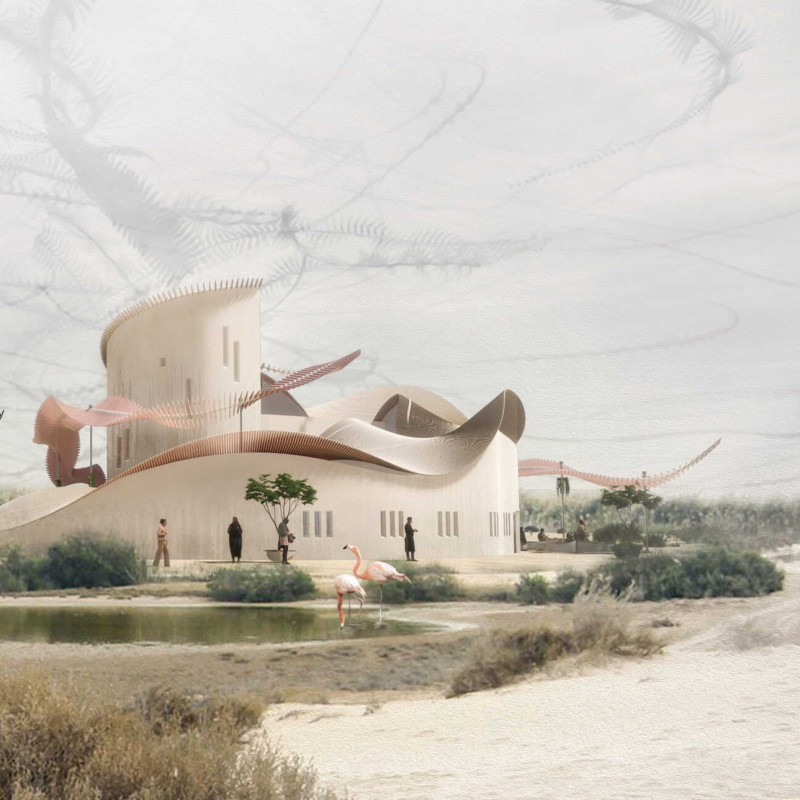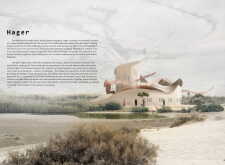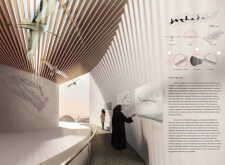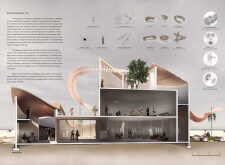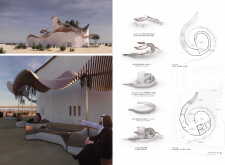5 key facts about this project
Hager is located in the Al Wahba Wetlands and serves as a refuge for visitors while highlighting the theme of bird migration. The design concept is inspired by the movements of flamingos in flight, translating their elegant patterns into a physical structure that connects with its natural surroundings. The building functions as both a shelter and a point of interest, inviting guests to engage deeply with the landscape surrounding them.
Structural Design and Form
The form of Hager is shaped by two intertwining trails that mimic the motion of bird wings. One trail serves as the main structure for the roof and also acts as a circulation path. This continuous ramp elevates visitors, offering them unique viewpoints of the wetlands. As people navigate through the building, they become part of the surrounding environment, fostering a sense of connection with nature.
Shading and Environmental Response
The second trail functions as an outdoor shading system, designed to protect visitors from sun exposure. This thoughtful approach not only enhances comfort but also addresses local climatic challenges. By utilizing advanced design techniques, Hager optimizes shading, which helps reduce overall heat accumulation and promotes a more sustainable environment.
Accessibility and User Experience
A key element of Hager's design is its commitment to accessibility. The continuous ramp ensures that everyone, including differently-abled individuals, can explore the space. This consideration enriches the experience for all visitors, allowing a diverse audience to appreciate the natural beauty of the wetlands. The thoughtful design encourages exploration and interaction with the landscape.
Materiality and Color Palette
The color palette of Hager includes light shades like pink and white, as well as accents of natural wood. These choices are made to resonate with the regional landscape and traditional architecture. The selection of colors and materials enhances the visual appeal of the structure, creating a harmonious relationship with the environment around it.
Large openings in the design allow natural light to filter in, creating shifting patterns of shadow and light throughout the interior. This feature connects visitors with nature, allowing them to experience the beauty of the wetlands in an intimate and engaging way.


